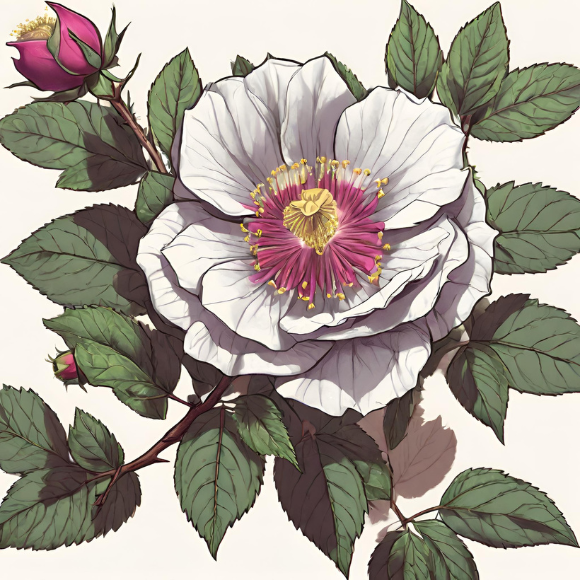
If you’re on the hunt for a hardy, low-maintenance rose that can handle tough conditions and still look stunning, let me introduce you to the Rosa Rugosa. This resilient beauty is perfect for both beginner and experienced gardeners.
Rosa Rugosa, also known as the Rugosa Rose or Japanese Rose, is a robust and versatile plant that’s celebrated for its toughness and gorgeous blooms. This rose variety is native to Eastern Asia and is known for its wrinkled (rugose) leaves, which add an interesting texture to the garden. The flowers come in shades of pink, white, and sometimes even purple, and they emit a delightful fragrance that’s hard to resist.
Soil Requirements
One of the standout features of Rosa Rugosa is its adaptability to various soil types. For optimal growth, plant in well-draining soil. These roses aren’t too picky and can tolerate sandy soils, which makes them perfect for coastal areas. The ideal soil pH for Rosa Rugosa ranges from slightly acidic to neutral, around 5.5 to 7.0. If you’re unsure about your soil’s pH, you can easily test it with a home soil test kit or take some soil samples from your planned planting area and send the samples to your local extension center.
Sun Requirements
Like most roses, Rosa Rugosa loves basking in the sun. For the best blooms and healthiest growth, plant your Rosa Rugosa in a spot where it will receive full sun for at least six hours a day. While they can tolerate partial shade, full sun exposure ensures the most vibrant flowers and robust plant health.
Watering Needs
Rosa Rugosa is fairly drought-tolerant once established but it’s important to water it well, especially during the first growing season, to help the roots develop. Aim to keep the soil evenly moist but not waterlogged. Water deeply to encourage deep root growth, and during hot, dry spells, be sure to water more frequently. A good rule of thumb is to water once a week, providing about an inch of water each time. Mulching around the base of the plant can help retain moisture and keep the roots cool.
Best Plant Hardiness Zones
Rosa Rugosa is renowned for its hardiness and can thrive in USDA zones 2 through 9. This wide range makes it suitable for a variety of climates, from the coldest northern regions to the warmer southern states. Its toughness means it can handle harsh Winters and hot Summers, making it a reliable choice for many gardeners across the country.
Additional Care Tips
- Pruning: Prune your Rosa Rugosa in early Spring before new growth begins. Remove any dead, damaged, or crossing branches to promote healthy growth and airflow within the plant.
- Fertilizing: These roses aren’t heavy feeders, but applying a balanced, slow-release fertilizer in early Spring can help boost their growth. Follow up with a second feeding in midsummer if needed.
- Pest and Disease Resistance: One of the best things about Rosa Rugosa is its natural resistance to many common rose diseases like black spot and powdery mildew. Regularly inspect your plants for pests like aphids and treat them with insecticidal soap if necessary.
- Winter Protection: In colder zones (2-4), adding a layer of mulch around the base in late Fall can help protect the roots from freezing temperatures.
With these simple care guidelines, you can enjoy the beauty and resilience of Rosa Rugosa in your garden. Its stunning blooms, fragrant scent, and low-maintenance nature make it a perfect addition for anyone looking to add a touch of elegance to their outdoor space.


 Previous
Previous

